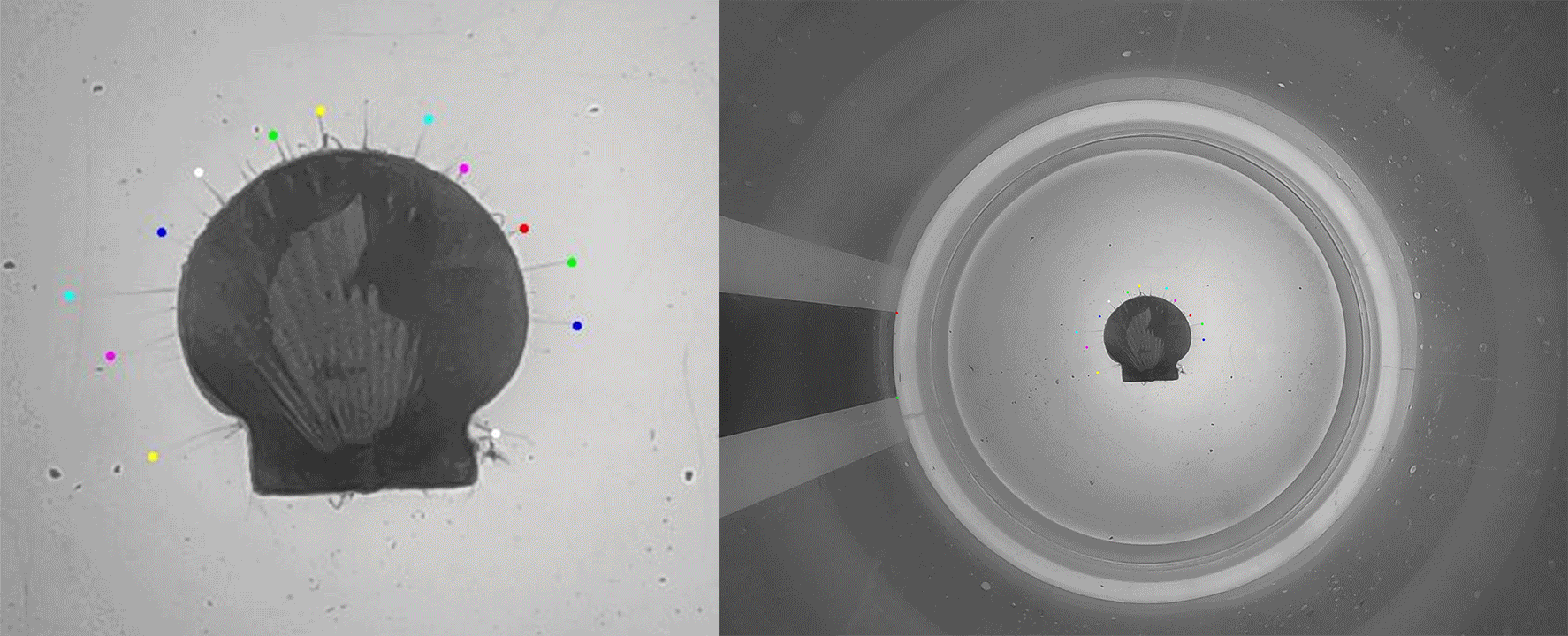Scallops track moving visual stimuli with their extensible sensory tentacles
Above, a bay scallop (Argopecten irradians) tracks the angular position of a rotating visual stimulus with its sensory tentacles. On the right is a video in which you can see the scallop sequentially extending sensory tentacles towards an isoluminant visual stimulus as it rotates counterclockwise. On the left is the close-up view of the same scallop in which individual tentacles may be seen tracking the path of the visual stimulus. From this video (and others like it), we learn that bay scallops respond to rotating visual stimuli with rotating waves of tentacle extension. By displaying such behaviors, scallops reveal they have panoramic spatial vision: they can locate objects relative to their own position around the entire arc of their body. For more, see our recent paper in Proceedings B.
